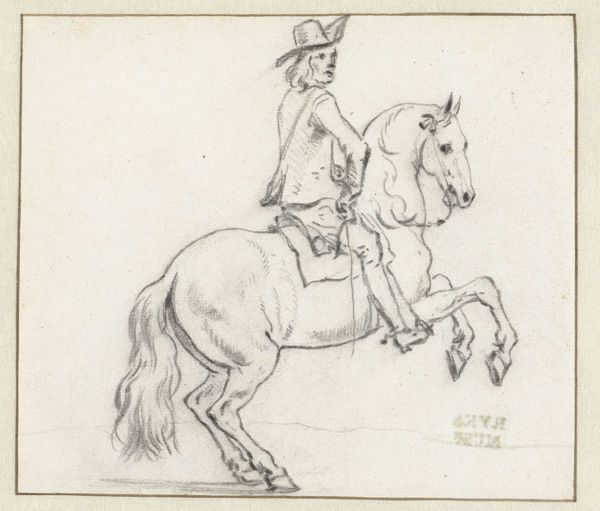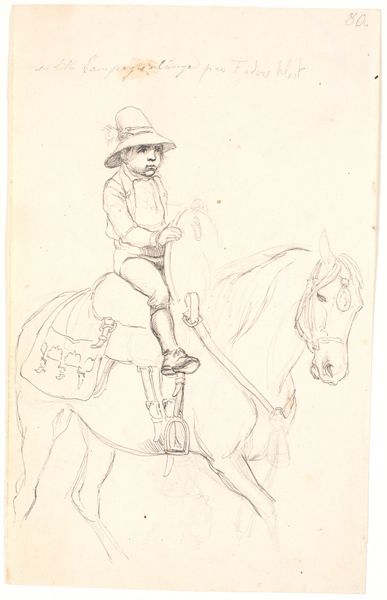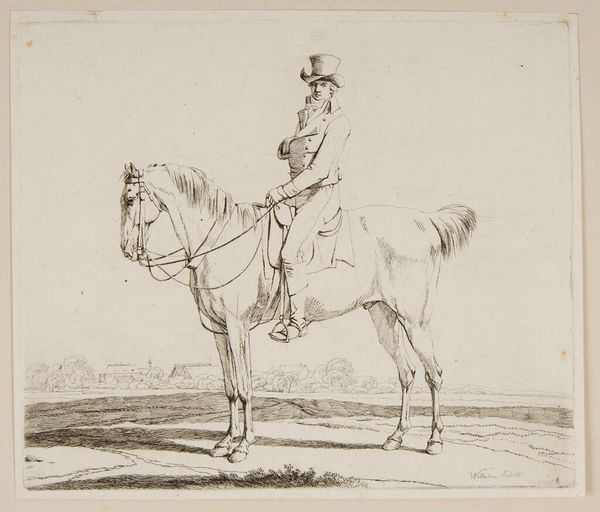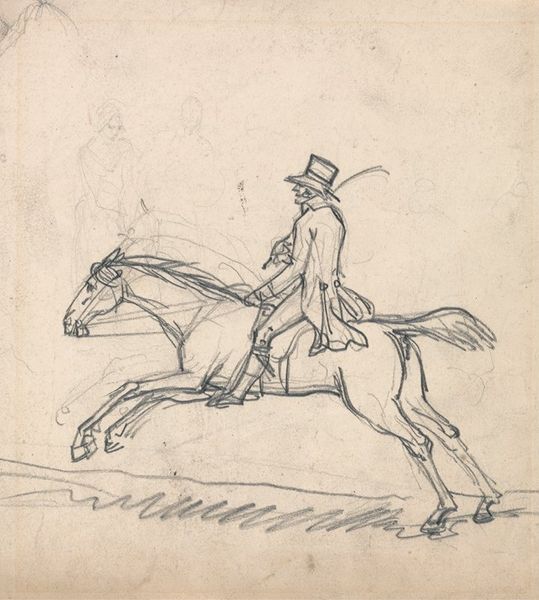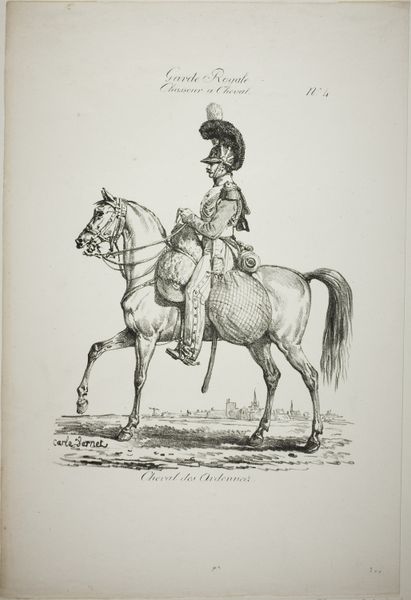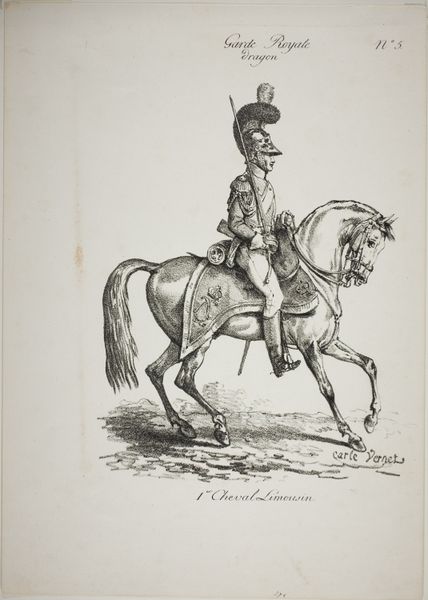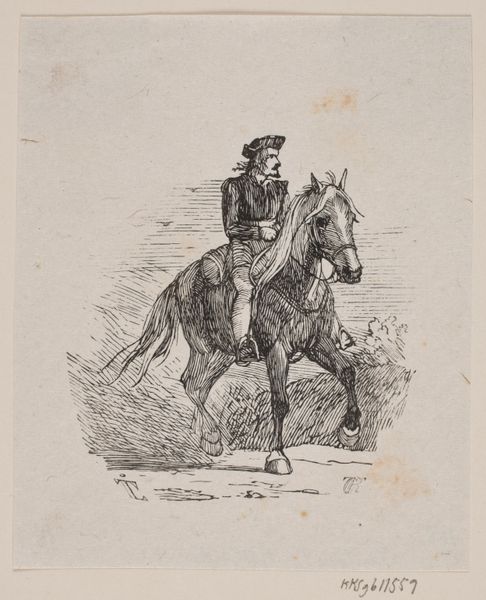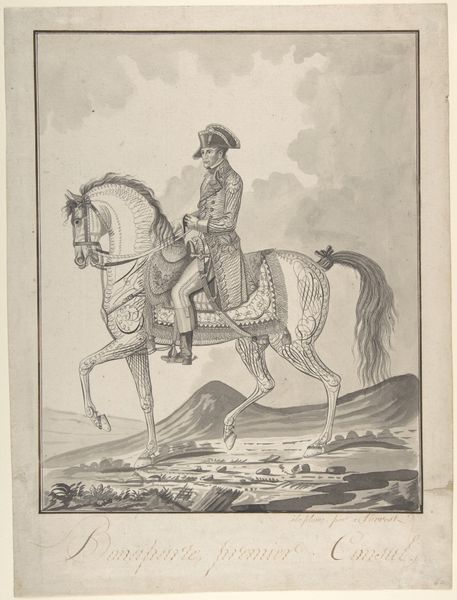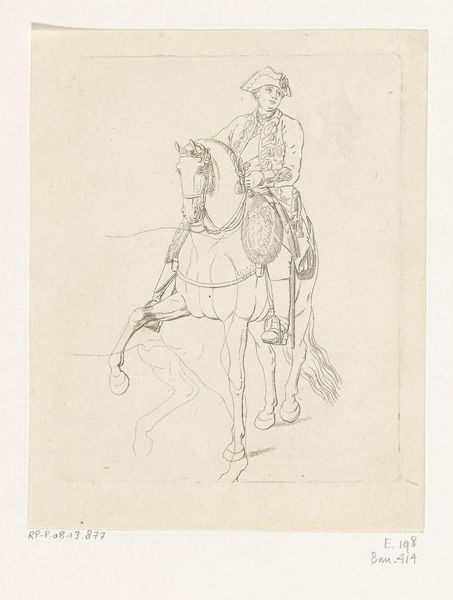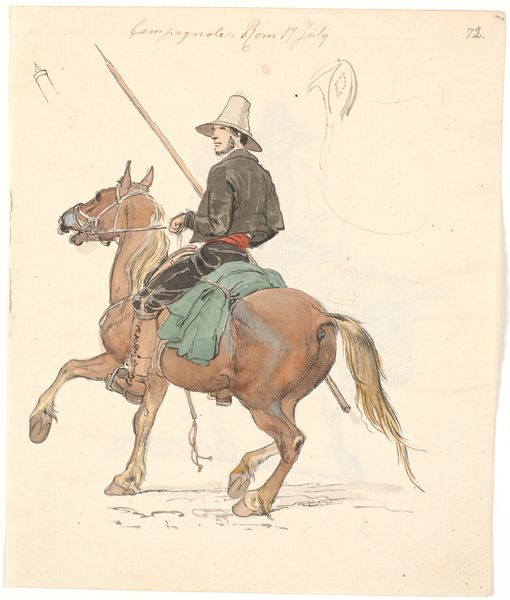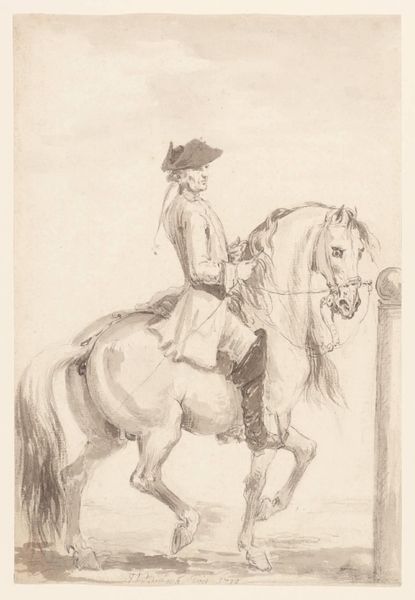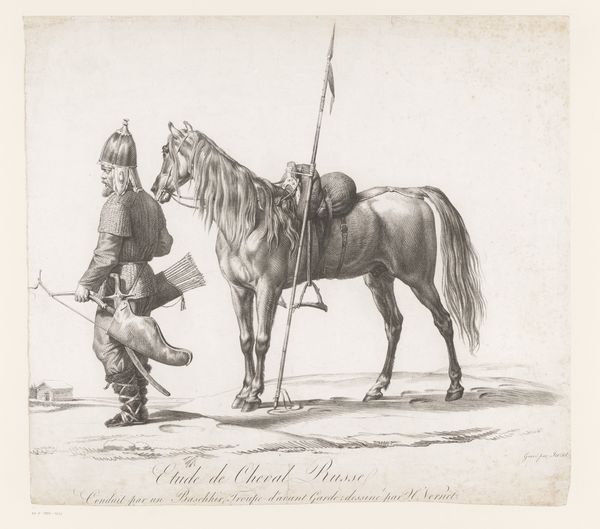
drawing, ink, pencil, chalk
#
portrait
#
drawing
#
pencil sketch
#
landscape
#
classical-realism
#
figuration
#
form
#
ink
#
classicism
#
pencil
#
chalk
#
line
#
academic-art
#
realism
Copyright: Public Domain
Editor: So this drawing, "A whipper-in on horseback" by Johannes Vinkeles, at the Städel Museum… it's executed in pencil, ink, and chalk. There’s a real focus on the form, on the muscularity of the horse. What strikes you about it? Curator: I notice the materials first. The starkness of pencil, ink, and chalk; these accessible, almost utilitarian materials, used to depict someone clearly within a social hierarchy. This tells me a lot about the accessibility, or lack thereof, when it comes to the access and the ownership of art production. Do you think Vinkeles made this piece for himself, or as a commission? Editor: That's interesting, I hadn't thought about the commissioning aspect. Given the title "Whipper-in," it makes me wonder if it was commissioned to depict this profession within fox hunting, perhaps showing their control, almost ownership, of the natural landscape and labor that came with that world. Curator: Exactly. Consider also the production process itself. Drawing with pencil, chalk and ink suggests preparatory work. This wasn’t meant to be a finished grand artwork, but more of a working document. The labour that comes with creating something that celebrates… labor. Editor: It’s interesting to consider this as part of the “academic art” style, because the materials make it feel very… grounded. Was it meant to be elevated into a higher art? Curator: Well, that’s the crucial question, isn't it? Is this sketch 'less than' because of the simplicity of materials, or do those materials actually give it a unique power, a rawness that challenges what "high art" can even be? It forces us to really analyze the artist's labour, and in some sense the horse and the whipper-in's labor as well, right? Editor: I'm definitely looking at this differently now, understanding that even material choice makes an artistic statement in itself, revealing societal positions on class and artistic labor. Curator: Precisely! Recognizing art not only for its aesthetic qualities, but for what it reveals about society and production.
Comments
No comments
Be the first to comment and join the conversation on the ultimate creative platform.

